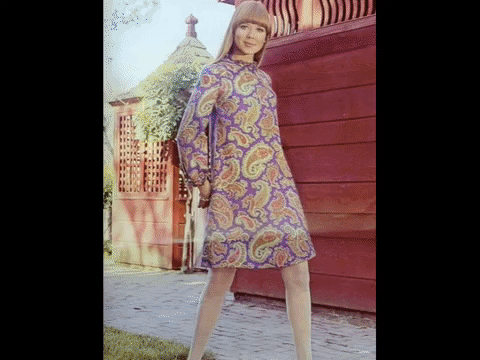
One of the things I love most about fashion is how it tells a story: of the wearer, of the time, and of a specific moment. For women’s fashion throughout the years, this couldn’t be more true. And since women have been historically disenfranchised, their clothes tell a story of evolving social status over time.
The 1960s are a perfect example of how fashion correlates with revolutionary moments. The 1960s and 70s were game-changing for women, as second-wave feminism picked up where the suffragette movement left off. Women’s liberation was totally reflected by the fashion of the time, when many girls and women were keen to challenge the status quo. Another game changer? Fashion was tailored toward surging youth markets rather than elites. In fact, young people defined style and high-fashion designers followed their their lead. Instead of trickling down from the minds of couture designers, trends would both start and end on the streets much like they do today.
Just how did this all of this play out in the 60s? Here’s a rundown of some 60s styles that were especially freeing for women, the icons that led the way, and why it continues to matter over half a century later.
The miniskirt
What is now known as the sexual revolution kicked off in the 1960s, when women began to show more skin and defy expectations of traditional modesty. It was British designer Mary Quant that designed and named the miniskirt in 1964, which she named after her favorite car, the Mini. French designer André Courrèges experimented with the same hemline at the time, sparking debate as to just who popularized it. According to Quant, “It wasn’t me or Courrèges who invented the miniskirt anyway—it was the girls in the street who did it.”
The model Twiggy quickly become the unofficial poster girl of the miniskirt. The skirt symbolized practicality and liberation for women, who could move around without the burden of heavy layers and escape ties to domestic obedience. With her heavily lined eyes, short hair, and thin frame, Twiggy was one of the first international supermodels and an icon of the decade.

Due to its length, the mini ushered in tights and sent stockings packing, liberating women from girdles, roll-ons, and suspender belts.
Babydoll dresses
The mini was a staple of the mid-60s, the early 60s being more of a continuation of the slim silhouettes and modified New Look popularized in the 50s. Mid-decade, fashion reflected a return to childhood, perhaps as a reaction to global horrors like Kennedy's assassination in 1963, race riots, and the looming Vietnam war.
Babydoll dresses are a perfect example of this childlike fashion surge. The girly shift dresses, though not invented in the 60s, became an immensely popular element of mod fashion. Like the mini, babydoll dresses with short hemlines were all the rage, a quasi-political statement for young women at the time. According to AnOther Magazine’s thorough profile on the garment, “the babydoll was a surprisingly revolutionary facet of mod culture, representing a complete abandonment of appropriate female stereotype for self-determined freedom.”

The pantsuit
A rebellion of 50s housewife culture, for women, meant that pants were no longer off-limits. Thanks to brand new legislation, women were capable of careers just like the men and had the business-wear to prove it. French designer Yves Saint debuted his infamous Le Smoking Suit in August 1966, the first tuxedo made for women, which was considered the height of high fashion and immodesty at the time.
The popularization of the pantsuit coincided with that of jeans, which by the 70s were so popular among women, public schools were forced to change their tune and allow girls to wear pants to class. Today the pantsuit is often associated with 2016 Democratic presidential candidate Hillary Clinton, who along with being a young feminist in the 60s, made the outfit a staple of her political career.

Hippie-chic
The combined influence of the decade’s musical explosion, defined by phenomena like Beatlemania, and counterculture movements including civil rights, antiwar, and women’s liberation, made for very interesting fashion come the late 1960s. The structured mod look soon gave way to a looser more bohemian style: think colorful, printed blouses, long flowy dresses and skirts, flower crowns, tie-dye tops, and bell bottom trousers.
This hippie look is often mistaken as a 70s staple; in fact, it was short-lived but potent product of 60s style. Women felt empowered to go barefoot and bra-less for the first time. They relished in mixing and matching tops and bottoms, colors and patterns like never before. They even drew influences from foreign cultures and the Victorian era, adding heaps of drama and nostalgia to their looks.
The androgynous nature of many 60s looks, from mod to hippie, also served to emphasize gender equality on a whole new scale. Men and women alike experimented with colorful prints, suits, and pants; women rocked short hair, men rocked long hair, and vice versa.
Though 60s fashion trends have waxed and waned since the titular decade, certain ideas of the time have changed women’s fashion forever. Namely, the era made clear that women have autonomy when it comes to their fashion and their destiny. Thanks in part to the style explosion in the 1960s, today’s women have a limitless inspirations to suit their ambitions. For fashion bloggers like myself, the revolutionary spirit of the 60s will always be a welcome influence!
